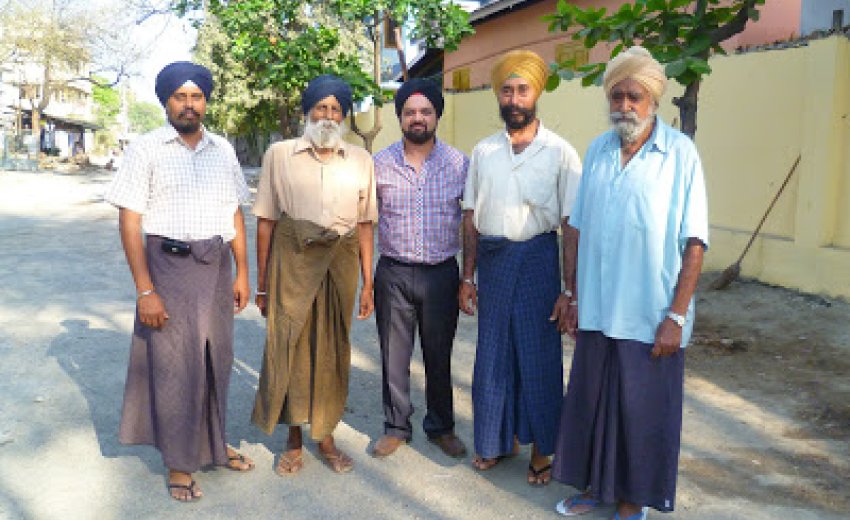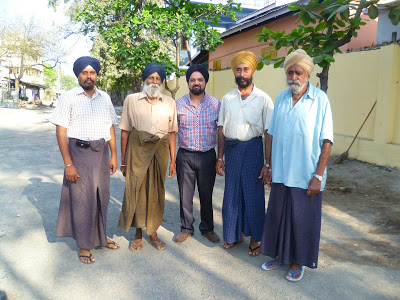 |
| Bhupinder Singh Bansal with Burmese Sikhs |
Saturday, April 27, 2013: From the huge success ‘The Sikhs of Kabul’ has attained since the past year, it has been difficult choosing a topic to make into a documentary based on factual material. So I decided to pick a location which was least visited by foreigners and the media in general. I contemplated in repeating the success of my last film with a subject that was primarily similar to the theme of my last film.
So after months of planning we decided to visit Myanmar or Burma as it was known earlier, having finally obtained our visas we travelled to Myanmar with a crew of 6 from India and Thailand arriving in the capital city of Yangon, formerly known as Rangoon. This has been a country totally isolated from the rest of the world. Only a few years ago there was mass unrest against four decades of military rule adverse to any political change. The military regime controlled the country with an iron fist and its democratic leader of the opposition party Aung San Suu Kyi is the chairperson of the National League for Democracy (NLD) in Burma. In the 1990 general election, the NLD won 59% of the national votes and 81% of the seats in Parliament. She had however, already been detained under house arrest before the elections. She remained under house arrest in Burma for almost 15 of the 21 years from 20 July 1989 until her most recent release on 13 November 2010 becoming one of the world's most prominent political prisoners.
My objective of being in Myanmar was to meet up with the Indian Sikh community who have been living here since the 1880’s when the British had annexed Upper Burma in 1885 to the British Indian Empire. The deposed Burmese King Thibaw was later exiled to India where he later died in 1916. Our first glimpse of this amazing place was finding just how clean and pollution free this city was compared to cities in the neighbouring countries. Our guide Chotu Ram, a Burmese Sikh who resembled more of a Chinese looking man wearing traditional Burmese attire greeted us at our hotel and wasted no time in taking us to one of Myanmar’s leading attractions – the famous 2500 year old historical Shwe Dagon Pagoda.
This was the site where thousands of anti-government protestors would converge to hold their mass rallies against the military junta back in 2007. Foreigners are restricted in entering this scared site but our determined Sikh guide managed to obtain permission to enter this heritage site and we managed to film inside the temple complex comprising of numerous adjoining Buddhist temples with their carved innate design made out of gold, it surely was an awesome experience for us.
Burmese Gurdwara
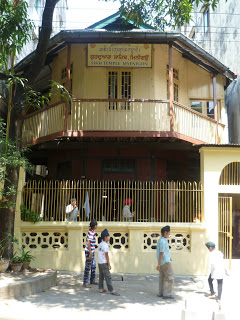 |
Here the Sikhs are a success, although small in numbers yet most prominent in the field of transport, trade and commerce. Young Sikh children all maintain the tradition of retaining their long hair unlike in the western world where a majority of Sikhs have become clean shaven adapting themselves of becoming the so called modern Sikhs. The Sikh temple hold Punjabi classes each day for four hours for the children who are all well versed in Punjabi yet speak mainly in Burmese amongst themselves. We were given a most gracious welcome by the members of the Sikh community, whose appearances are far from the usual looking Sikhs we have back in London or India. Their features are somewhat oriental looking, with their turbans tied up in a round fashion and not pointed at the front as was mine. The striking feature of their attire is that all the Sikh males wear a lungi or dhoti, it’s the national dress of the Burmese I guess as everyone wears it. It is quite odd to see six foot tall Sikhs compared to the local Burmese males who are so much smaller in height all wearing lunghis with their dark complexions. The Sikh women all wear the traditional Burmese dress made out of Silk or cotton seldom did I witness any women wearing a colourful bright Punjabi suit as they do back in India or England.
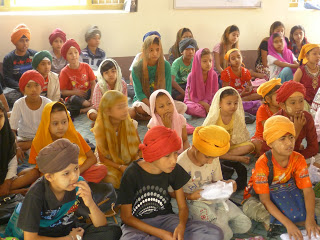 |
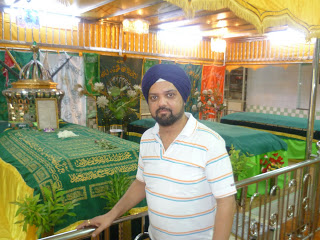 |
| Shrine of Mughal Emperor Bahadur Shah Zafar |
Our last day in Mandalay was completed by a visit to the historical Irrawaddy River which bisects the country from north to south. We managed to arrange a local boat which took us far out to the river where with my host Mr Sukhdev Singh we took a nostalgic trip back to the 1940’s when during WW2 the Japanese Army had advanced into Burma from Malaya. As we know thousands of Indians had enlisted into the British Indian Army and had fought Japanese soldiers in the jungles of this hostile region.
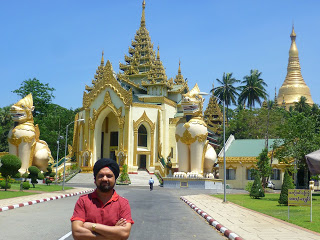 |
I expected Myanmar to be a country like India or Bangladesh, full of chaos and red tape but how wrong I was my overall view of this stunning country is that it is far developed as I initially imagined. It’s a striking country full of golden pagodas and palm trees, people are so cordial and the hospitality of the Sikh community made our visit indeed so comfortable, it makes me proud knowing they are accepted with respect as the Burmese Sikhs of Myanmar. My documentary is still in post-production and should be ready next month to be submitted to various film festivals globally with the title ‘The Road to Mandalay – the Burmese Sikhs’.
Bhupinder Singh Bansal is writer of ‘The Lion’s Firanghis – Europeans at the Court of Lahore’ which charts the careers of former soldiers and mercenaries of the French emperor Napoleon Bonaparte to Punjab in India he has received 6 international awards since its publication in 2010. As a new filmmaker his documentary ‘The Sikhs of Kabul’ has been shown at various film festivals such as at the Punjabi Film Festival in Toronto, Sikh Arts Film Festival in New York, Iceland Documentary Film Festival and other prestigious film festivals in Vancouver, Qatar, New Delhi, London, Kuala Lumpur, Singapore, Barcelona and also at the 26th Australian Sikh Games in Melbourne and Perth – Australia

